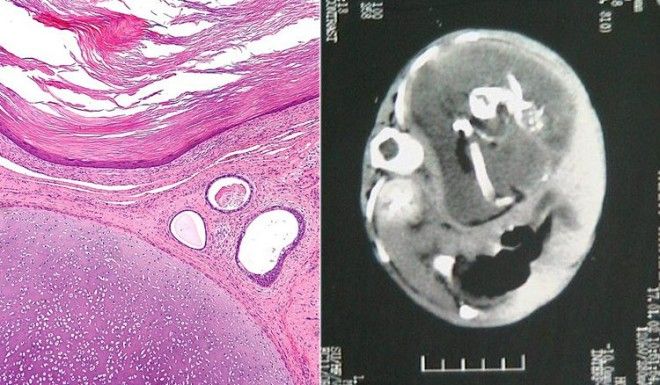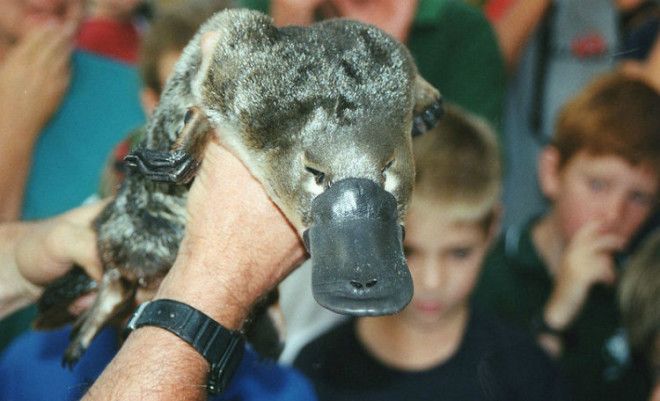We have learned to control so many aspects of our life that when we see accidents, coincidences, or anything unexpected, we find ourselves in denial because they were not what we have imagined. Here are some such facts that sound like bullshit but are actually true.
1. The killer whale is a natural predator of the moose.

The natural habitats of moose are the forests of the Northern Hemisphere with temperate and subarctic climates. At present, they are mostly found in Canada, Alaska, New England, Russia, Fennoscandia, and the Baltic states. They are the largest species in the deer family, but unlike deer, they also feed on aquatic vegetation such as lilies and pondweed. They are unique in their ability to dive underwater and often reach lake bottoms to feed on plants. Moose have special fatty pads in their nose that help close the nostrils preventing water from entering.
Being a large animal, a fully grown moose has few enemies except Siberian tigers. Packs of grey wolves and brown bears are known to prey on vulnerable moose, especially females with calves. As moose often dive for food, they are also preyed on by killer whales when swimming between islands near North America’s northwest coast. There are also instances of moose being attacked by Greenland sharks.
2. Tumors can have hair, teeth, bone, and even complex organs such as eyes and brain matter. In rare cases, they can also contain structures resembling a fetus.

Named after the Greek words for “monster” and “tumor”, teratomas are tumors that result from abnormal development of germ cells and embryonic stem cells. Both these types of cells are pluripotent, that is, they are a type of stem cell that can develop into several types of tissues including those of intestines, lungs, nervous system, bones, teeth, and the tissues of various organs. Tumors of these cells often result in the development of abnormal structures having even skin and cysts which may have abundant hair. Rarely, they could also develop into a malformed fetus which may even have a few complete body parts.
Teratomas develop in people of all ages and typically form in the ovaries, testis, or tailbone. They usually are harmless, unless they grow quite large, divert blood flow from vital organs, or result in autoimmune illnesses. Over a quarter of ovarian tumors and almost half of testicular cancers are teratomas.
3. It takes a week to 10 days to make a jellybean.

During the first phase, the syrup is made by boiling sugar and other ingredients to the right consistency. Flavor and color are then added to the syrup which is then piped to the starch casting area. The casts are made using cornstarch, and the heated syrup is squirted into the tiny molds. Each tray contains several hundred to over a thousand molds. When everything is cooled down, the candy centers are dumped out and the cornstarch is recycled.
The candy centers are then added to a stainless steel, hollow sphere which rotates several hundred times per minute. To these rotating spheres, more sugar, flavor, and syrup is added, all of which forms the hard shell around the previously made candy centers. A glaze of confectioner’s sugar is also added to give them their glossy coat. This whole process takes between six to 10 days.
4. Wasps get aggressive towards the end of summer because they get drunk on fermenting fruit hanging from the trees.

Once they are finished with providing for their queen, the worker wasps have nothing left to do before they die than to enjoy themselves. Wasps have a surprisingly diverse taste for food. Though they mainly feed on nectar, they also forage for food. They are known to feed on decaying flesh, live arthropods, honeydew, the food humans eat, and even prey on honeybees and spiders. They also feed on ripe and fermenting fruits which gets them drunk. This makes them bolder and more prone to attack.
5. In 1919, a large tank storing 2.3 million gallons of molasses burst during a heat wave flooding the streets of Boston at 35 mph with molasses killing 21 and injuring 150.

The molasses tank belonged to Purity Distilling Company, and the molasses was to be transferred to another plant in Cambridge. The tank was 50 feet (15 meters) tall and 90 feet (27 meters) in diameter containing 2.3 million US gallons (8,700 cubic meters) of molasses. On January 15, 1919, the temperature had risen from 20 F to above 400 F (-170 C to 40 C), and around half-past midday, the tank collapsed shooting rivets like bullets.
The molasses wave was 25 feet (8 meters) high and flooded several blocks two to three feet deep. It was strong enough to damage nearby railway girders and momentarily tip a railroad car off its tracks. A truck was also hurled into Boston Harbor. Buildings were swept off their foundations, and being a very sticky liquid, it was as nearly impossible for those caught in the wave to survive. Rescue efforts were hampered as reaching the victims was made difficult because of the syrup. Several of the dead were so thickly coated that they were hard to spot.
6. The pistol shrimp clasps its claws so fast that it creates a bubble that reaches 5,000 K (4,7000 C), almost the surface temperature of the sun. The bubble’s implosion causes a shockwave “shot” that stuns its prey.
The pistol shrimp is one of the loudest creatures in the ocean world, the others being beluga whales and sperm whales. When the pistol shrimp’s claw snaps, the pressure generated is enough to stun or even kill small fish. Though it does have two claws, only one of the claws works as the snapping claw which snaps so fast that the water evaporates creating a vapor or cavitation bubble. At a distance of four centimeters, the snap generates an acoustic pressure of 80 kilopascals. The cavitation bubble has a velocity of an amazing 100 kilometers per hour and the sound reaches 218 decibels. As it collapses, the cavitation bubble produces sonoluminescence, that is it emits short bursts of light and reaches a temperature of 5,000 K (4,700
7. The platypus has no nipples. The female instead “sweats” milk for its babies.

Platypus, also known as the “duck-billed platypus,” belong to one of the three types of mammals known as monotremes, that is mammals that lay eggs rather than giving birth to a baby. It wasn’t until 1884 that the naturalists could confirm that the female platypus laid eggs. Each female lays around one to three leathery-shelled eggs, and the hatchlings are initially blind and hairless. Being a mammal, the platypus has mammary glands but no nipples. Instead, the milk is released through the skin pores and gets collected in the grooves in her abdomen from where the babies lap it up.
Another interesting fact about platypuses is that they have a sense known as electroreception. Instead of sensing other animals using their eyes or ears, they sense them by detecting electric fields generated by muscular contractions. Monotremes are the only mammals with electroreception, and platypuses are the most sensitive.
8. In the 1960s, the CIA spent $20 million on creating spy cats by implanting microphones in the cats and dropping them off in the Kremlin and near Soviet embassies.
The project named Acoustic Kitty was launched by the CIA’s Directorate of Science & Technology. The implantation surgery took an hour during which the veterinarian implanted a microphone in the cat’s ear canal. The microphone is connected via a wire to a small radio transmitter located at the base of its skull. The first Acoustic Kitty was released in a park near the Soviet embassy in Washington, DC to innocuously record and transmit a conversation between two men. It is alleged that the spy cat died almost immediately after being hit by a taxi. According to CIA’s former director Robert Wallace, the cat didn’t die. The equipment was taken out, the cat was re-sewn up, and went on to live a long life. But, the project had to be abandoned because, to the CIA’s consternation, the cats were difficult to train and got easily distracted by food when hungry.
9. The fax machine was patented in 1843.

Scottish inventor and engineer Alexander Bain, known for his invention of the electric clock, worked on developing the early versions of the fax machine between 1843 and 1946. Bain created an apparatus that contained a clock and two pendulums and an electronic probe that scanned metal pins arranged on a cylinder made of insulating material for scanning and transmission. The received message was then reproduced on an electrochemically sensitive paper. He patented the mechanism on May 27, 1843.
In 1848, an English physicist named Frederick Bakewell patented a superior “image telegraph.” However, both Bain’s and Bakewell’s mechanisms were not practically viable as they produced a poor quality image and the transmitter and the receiver were never truly synchronized. In 1961, Italian physicist Giovanni Caselli invented the first practical telefax machine called the Pantelegraph. He also introduced the first commercial telefax service 11 years before the invention of practical, workable telephones.
10. There were 50% fewer people in the world when John F. Kennedy was the president of the United States.

According to the United Nations estimates, the world’s population between 1960 and 1965 was over three billion. The world population reached seven billion on October 31, 2011, and as of December 2017 is 7.6 billion. It took more than 70,000 years for the population to rise from less than 0.015 million in 70,000 BCE to one billion in early 1800s CE. In around 100 years, the population doubled and grew to 2.5 billion in the 1950s. In just 50 years, the population was 6.1 billion and is estimated to reach 8 billion by 2025.

